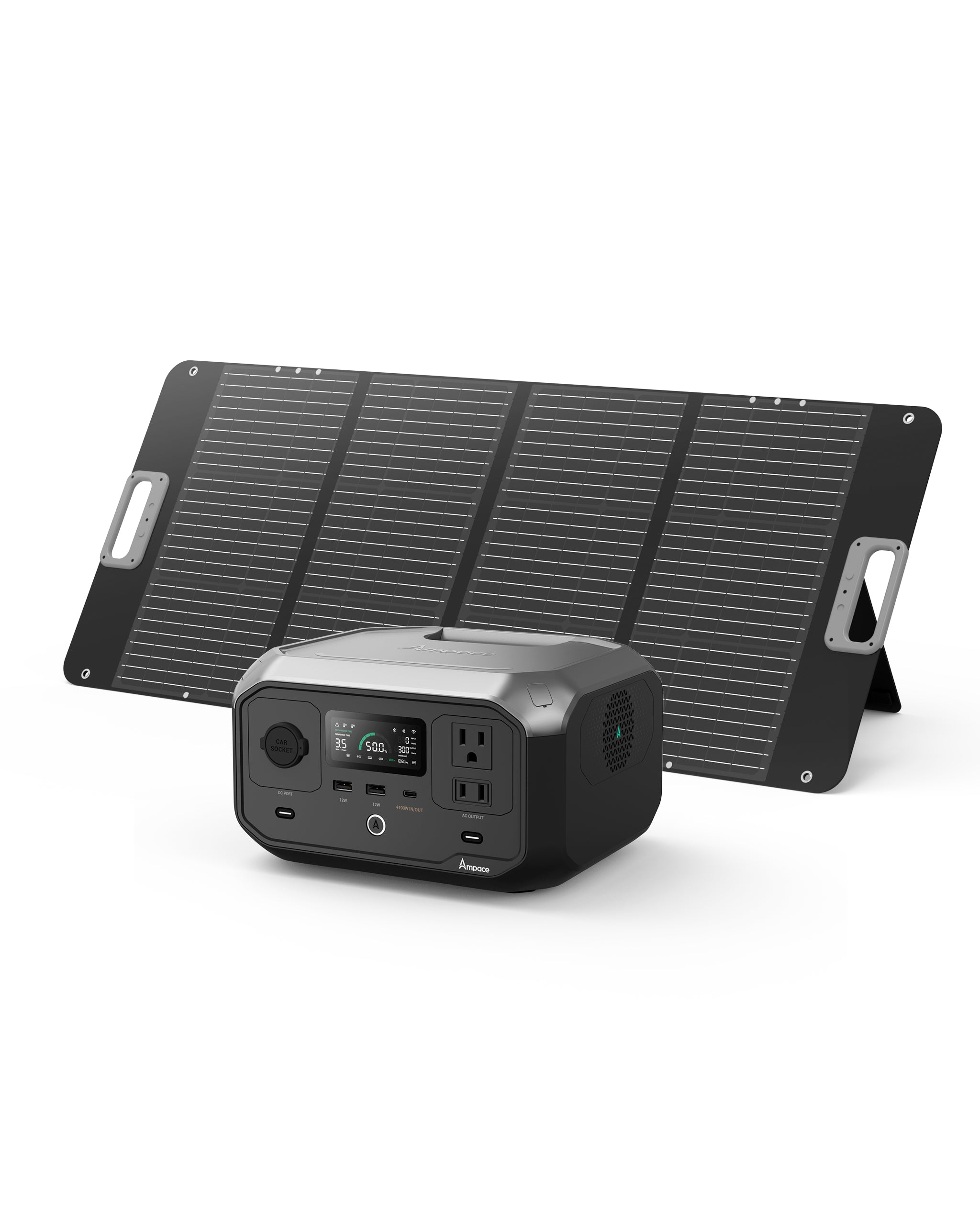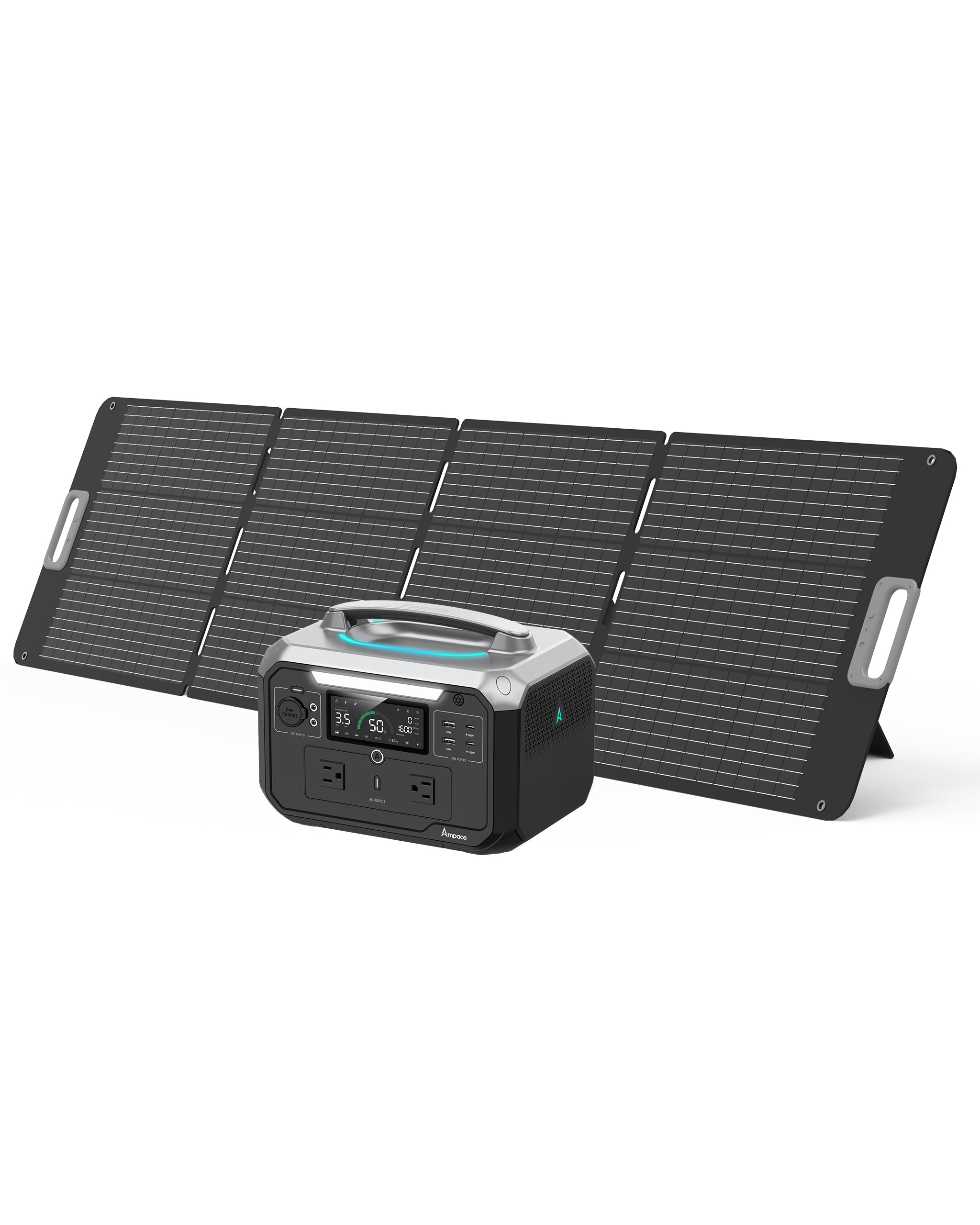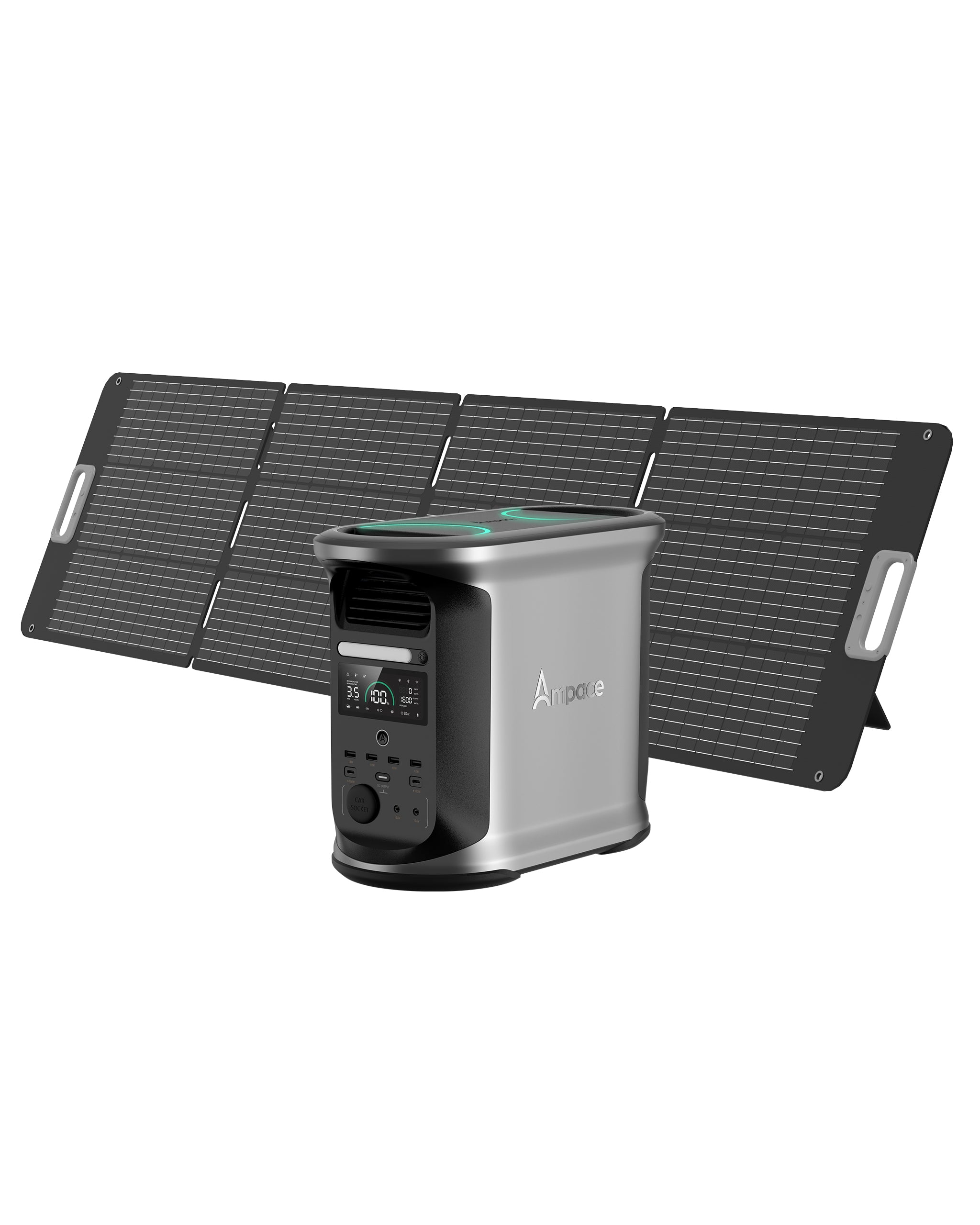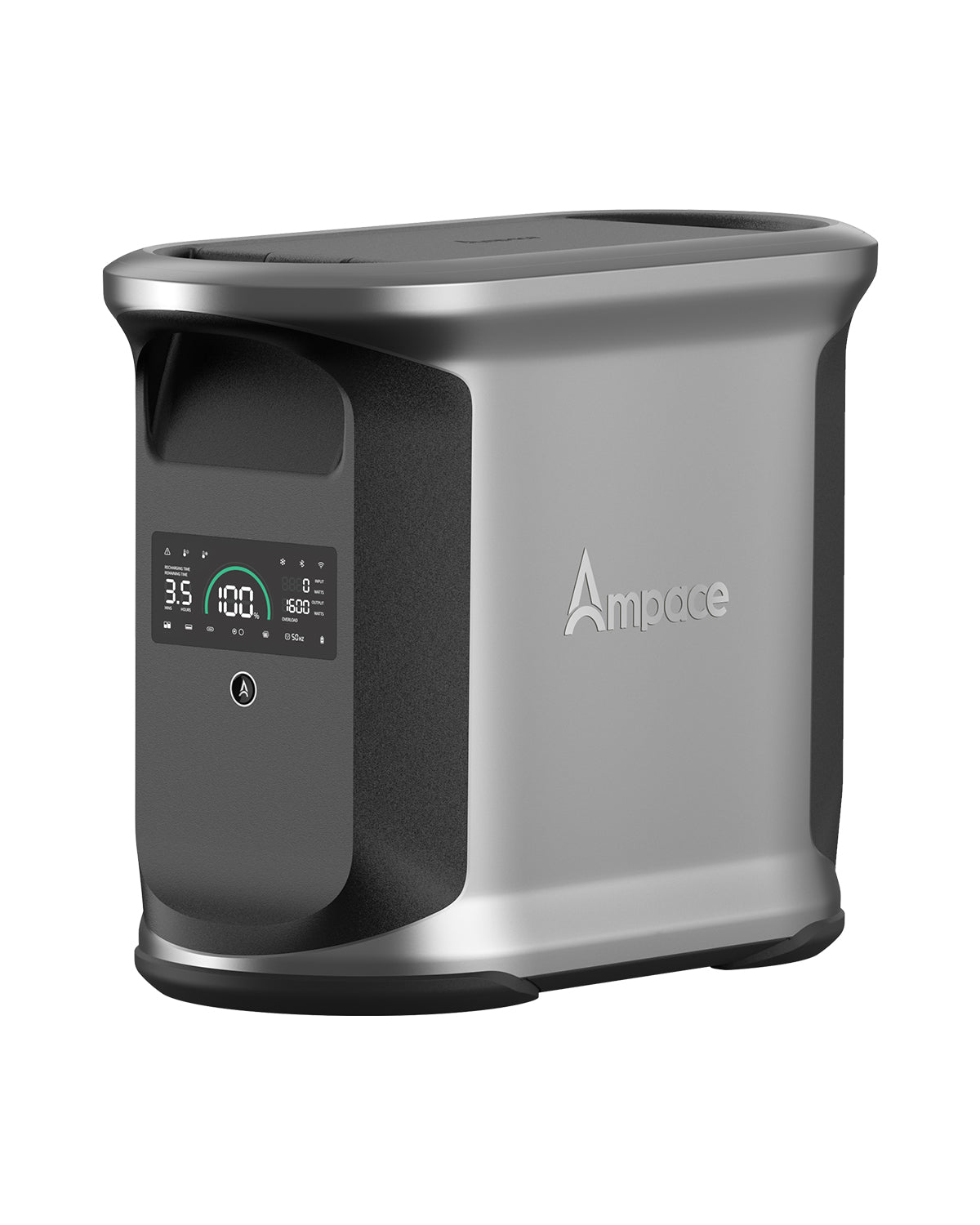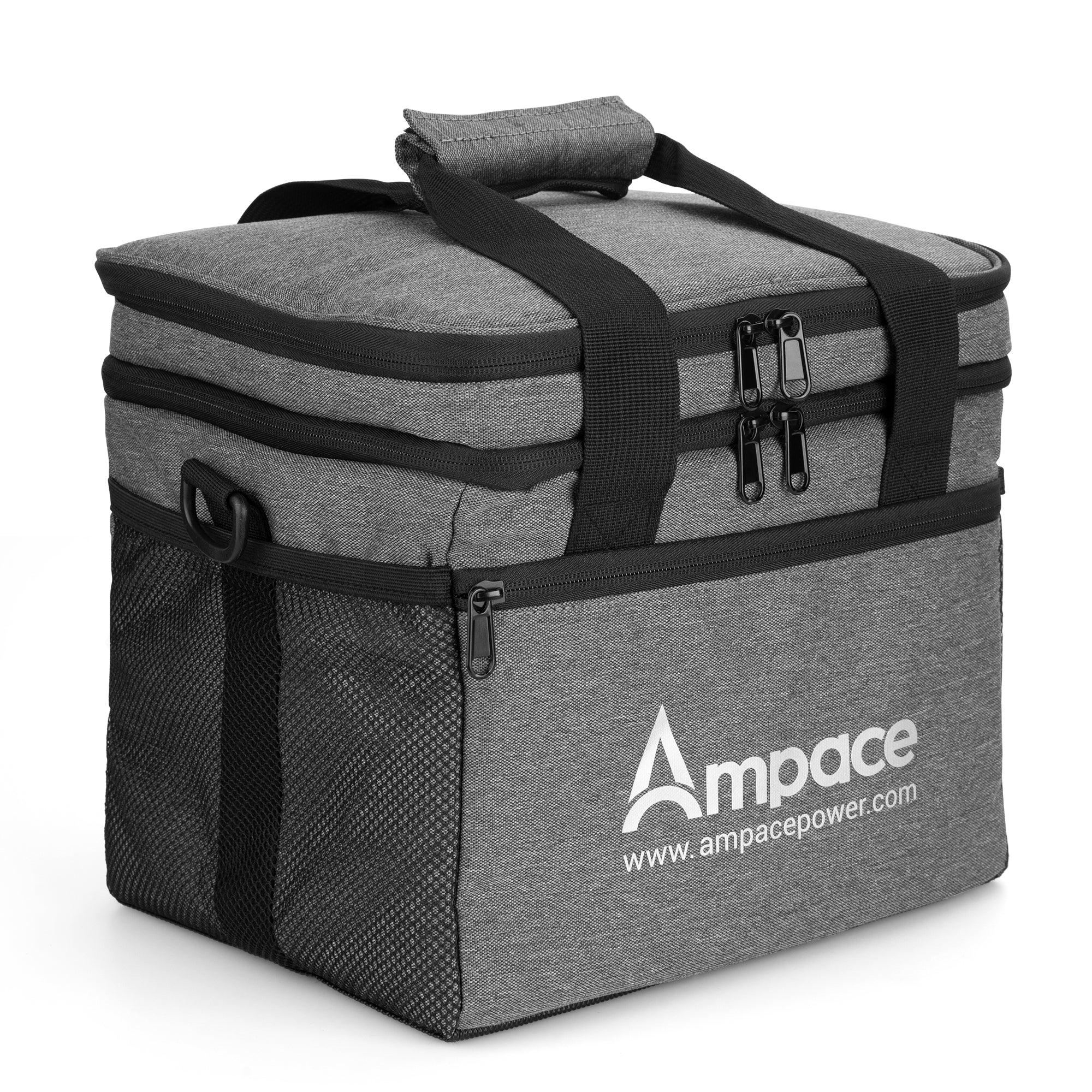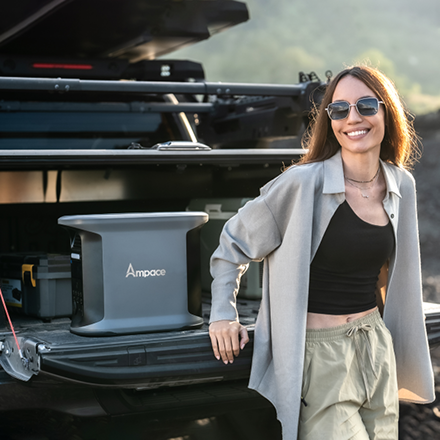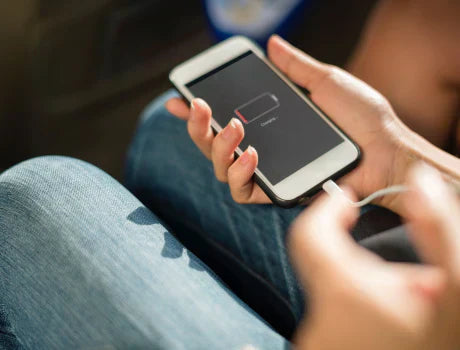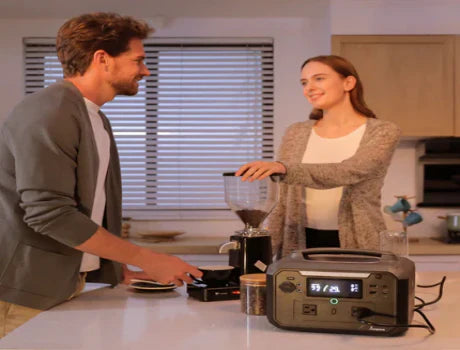How to Power Your Drone with a Portable Station?

Table of Contents
Many people choose to bring drones when traveling, whether for filming or exploring landscapes, as they provide a new perspective for recording life compared to traditional camera shooting.
However, drone flight time is usually limited by battery capacity, which makes many enthusiasts feel inconvenient during outings. Choosing an outdoor power solution may solve this problem for you. The Ampace power station , as a portable outdoor charging solution, provides drone users with extended operating time.
This blog will introduce the basic knowledge of drones and drone batteries, charging methods, and let us understand how Ampace uses power stations to extend the drone’s operating time, enhancing your outdoor filming experience.
What Are Drones and Drone Batteries?
A drone (Unmanned Aerial Vehicle, UAV) is an unmanned aerial vehicle remotely controlled using an app or controller. They are widely used in aerial photography, surveying, agriculture, and even entertainment activities. The core power source of a drone is its battery, and the battery’s performance directly determines the drone’s endurance capability.
The performance of drone batteries directly affects flight time and stability, and different types of batteries are suitable for different drone models and use cases. Below are the most common types of batteries currently used in drones:
Lithium Polymer Batteries (LiPo)
Drone batteries often use lithium polymer (LiPo) batteries, prized for their lightweight design and high energy density. Compared to nickel-cadmium or lithium-ion batteries, LiPo offers a higher discharge rate and reduced weight, ideal for high-performance drones. Capacities typically range from hundreds to thousands of mAh, varying by drone model and purpose.
Lithium-Ion Batteries (Li-ion)
Lithium-ion (Li-ion) batteries are common in entry-level or low-power drones. They have lower energy density and discharge rates than LiPo batteries but provide better safety, longer lifespan, and lower costs. They suit lightweight drones with modest endurance and short flight times.
Nickel-Metal Hydride Batteries (NiMH)
Nickel-metal hydride (NiMH) batteries were once popular in early or toy-grade drones. Heavier, with lower energy density and slower charging than lithium batteries, they’ve faded from modern high-performance drones. Still, their affordability and durability appeal to beginners or budget-conscious users.

Suitable Application Scenarios for Drones
Drones showcase their powerful capabilities in the field of photography, shining brightly during outdoor activities by offering unique perspectives and recording methods for capturing life. They not only enhance the enjoyment of outings but also help us capture stunning scenery and fleeting moments that are typically out of reach. Below are some outdoor application scenarios where you can leverage drones for filming:
Aerial Photography During Hiking
While hiking, drones can soar above to provide a bird’s-eye view of mountains, rivers, and landscapes, documenting the grandeur of nature. Whether it’s winding trails through the mountains or vast canyon depths, drones can deliver breathtaking visuals for you.
Capturing the Ambiance of Camping
During nighttime camping, drones can capture the atmosphere of the campsite under a starry sky. The laughter of friends around a campfire, the flickering lights from tents, and the twinkling stars overhead—these heartwarming moments can all be preserved forever through a drone’s lens.
Dynamic Shots at Beach Vacations
On a beach vacation, drones can record the dynamic beauty of waves crashing against the shore. You can film surfers’ agile movements or the stunning scenery of the sea and sky merging at sunset, creating unforgettable memories of your trip.

The Challenge of Battery Endurance
Outdoor drone use often lacks nearby power sources, making battery life a major limitation. Flight time is short, especially with long videos or intense flights that drain power fast. Carrying spare batteries adds weight, and when they run out, you risk missing key shots.
A portable charging station like Ampace solves this by recharging batteries anywhere, keeping your drone ready. With this, you can explore and film freely without power worries, capturing every stunning moment.

How to Charge a Drone?
Charging a drone is a straightforward process, but it requires attention to detail. Here are the basic steps for charging:
- Use the Original Charger: Most drone manufacturers (such as DJI) provide dedicated chargers designed to match the battery’s voltage and current to prevent damage. Before charging, confirm the wattage of the charger or charging cable. Using a high-wattage charger or a USB-PD cable can result in faster charging speeds.
- Connect the Battery: Properly attach the battery to the charger, ensuring the positive and negative terminals are not reversed.
-
Choose a Suitable Charging Environment: Charge in a well-ventilated area with moderate temperatures to avoid overheating or excessive cold.
Monitor the Charging Process: Avoid leaving the charger unattended for long periods to prevent potential issues. -
Disconnect After Full Charge: Some smart batteries automatically stop charging when full, but it’s recommended to unplug the power source promptly once the battery is fully charged.
Charging time varies depending on the battery capacity and charger power, typically ranging from 30 minutes to 2 hours. However, when traveling outdoors, the limitations of traditional charging methods become apparent: you either need to carry multiple pre-charged batteries or find a power outlet, both of which add extra burden.
For users passionate about drone photography, the Ampace Andes 1500 and Andes 600 Pro portable power stations are undoubtedly the ideal companions for outdoor adventures.

Ampace Andes 1500: Long-Lasting Power for Your Drone
The Andes 1500 is a portable power station tailored for drone enthusiasts, especially perfect for extended outdoor shoots. With its massive 1462Wh battery capacity and a continuous output of 2400W (Surge 3600W), it delivers robust and reliable power to keep your drone flying worry-free, even in the wilderness.  Designed for portability, the Andes 1500 features a rugged shell that effortlessly withstands outdoor conditions, ensuring your gear stays protected anytime, anywhere.
Designed for portability, the Andes 1500 features a rugged shell that effortlessly withstands outdoor conditions, ensuring your gear stays protected anytime, anywhere.
- USB PD Fast Charging: Equipped with two 100W USB-C PD ports, the Andes 1500 supports fast-charging technology, efficiently recharging drone batteries via USB PD cables to minimize downtime. Even more, it can fully recharge itself in just 55 minutes via AC power, getting you back to full capacity in no time.
- Multi-Port Design: Offering 13 output ports, it can simultaneously power drones, cameras, laptops, and more, meeting all your outdoor filming needs with ease.
|
Drone Model |
Battery Capacity (mAh / Wh) |
Charging Times |
|
DJI Mavic 2 Pro |
3850mAh / 59.3Wh |
Approx. 24 times |
|
Autel EVO II |
7100mAh / 82Wh |
Approx. 17 times |
|
Parrot Anafi USA |
3400mAh / 102.6Wh |
Approx. 14 times |
Ampace Andes 600 Pro: Lightweight Efficiency for Short Trips
The Andes 600 Pro is a compact power station ideal for drone users on short trips. With a 584Wh battery capacity and 600W continuous output (Surge 1800W), it’s more than capable of supporting lightweight drones.
 Weighing 16.8 LBS (7.62 kg) and featuring a sleek, portable design, it’s easy to carry single-handedly, seamlessly fitting into your outdoor plans.
Weighing 16.8 LBS (7.62 kg) and featuring a sleek, portable design, it’s easy to carry single-handedly, seamlessly fitting into your outdoor plans.
- USB Fast Charging: The Andes 600 Pro supports fast charging to quickly recharge drone batteries, keeping your equipment ready at all times.
- Versatile Port Options: With 9 output ports—including AC outlets, USB-C ports, and a car port—it not only powers your drone but also supports phones, tablets, and other devices, offering flexible power solutions for short-travel needs.
|
Drone Model |
Battery Capacity (mAh / Wh) |
Charging Times |
|
DJI Mavic 2 Pro |
3850mAh / 59.3Wh |
Approx. 9 times |
|
Autel EVO II |
7100mAh / 82Wh |
Approx. 7 times |
|
Parrot Anafi USA |
3400mAh / 102.6Wh |
Approx. 5 times |





